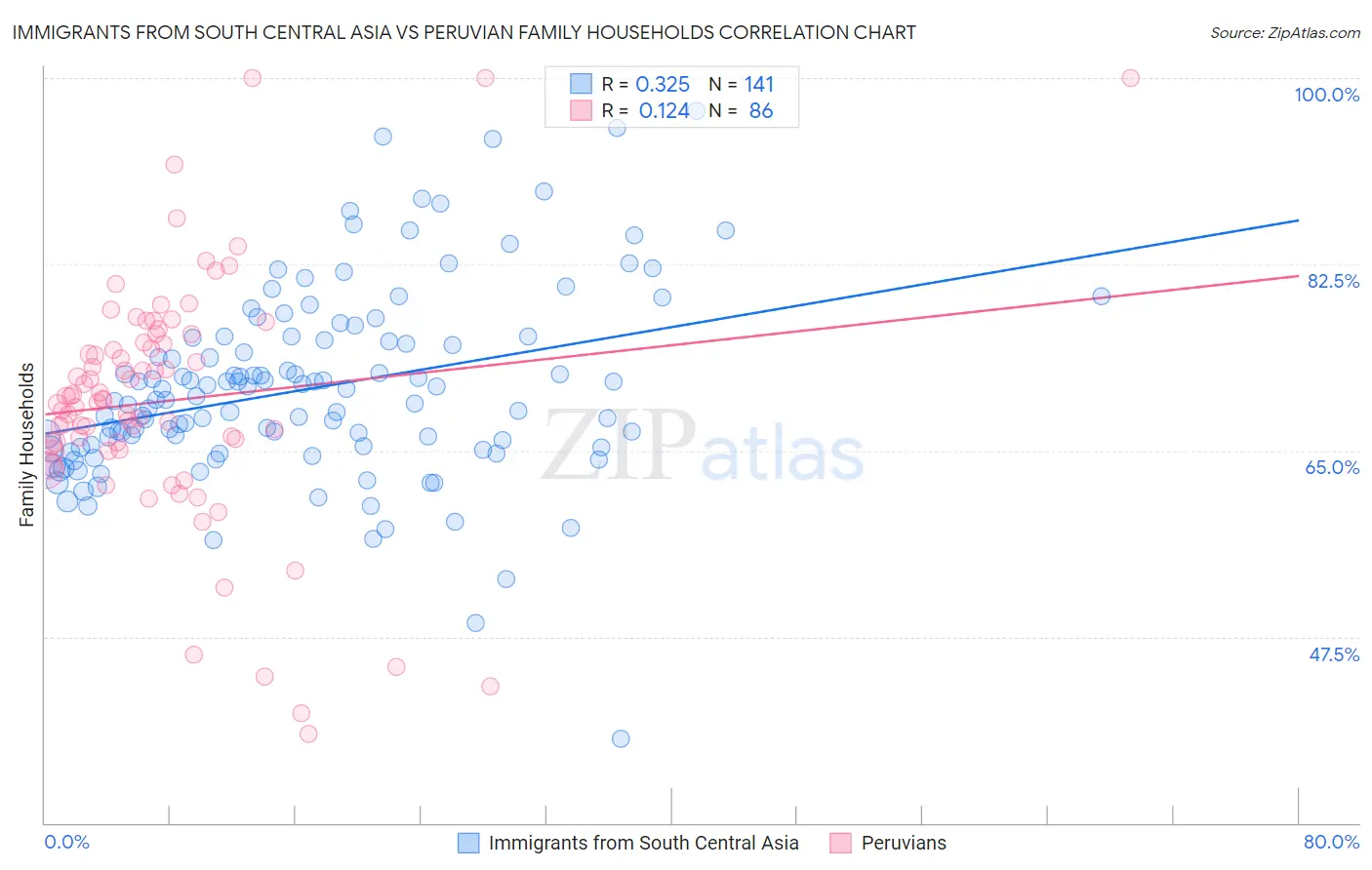Immigrants from South Central Asia vs Peruvian Family Households
COMPARE
Immigrants from South Central Asia
Peruvian
Family Households
Family Households Comparison
Immigrants from South Central Asia
Peruvians
66.4%
FAMILY HOUSEHOLDS
100.0/ 100
METRIC RATING
49th/ 347
METRIC RANK
67.1%
FAMILY HOUSEHOLDS
100.0/ 100
METRIC RATING
36th/ 347
METRIC RANK
Immigrants from South Central Asia vs Peruvian Family Households Correlation Chart
The statistical analysis conducted on geographies consisting of 472,677,474 people shows a mild positive correlation between the proportion of Immigrants from South Central Asia and percentage of family households in the United States with a correlation coefficient (R) of 0.325 and weighted average of 66.4%. Similarly, the statistical analysis conducted on geographies consisting of 362,986,655 people shows a poor positive correlation between the proportion of Peruvians and percentage of family households in the United States with a correlation coefficient (R) of 0.124 and weighted average of 67.1%, a difference of 1.1%.

Family Households Correlation Summary
| Measurement | Immigrants from South Central Asia | Peruvian |
| Minimum | 37.9% | 38.4% |
| Maximum | 97.0% | 100.0% |
| Range | 59.0% | 61.6% |
| Mean | 70.8% | 69.7% |
| Median | 69.8% | 69.8% |
| Interquartile 25% (IQ1) | 65.3% | 65.6% |
| Interquartile 75% (IQ3) | 75.5% | 75.1% |
| Interquartile Range (IQR) | 10.2% | 9.5% |
| Standard Deviation (Sample) | 9.0% | 11.5% |
| Standard Deviation (Population) | 9.0% | 11.4% |
Demographics Similar to Immigrants from South Central Asia and Peruvians by Family Households
In terms of family households, the demographic groups most similar to Immigrants from South Central Asia are Immigrants from Venezuela (66.4%, a difference of 0.050%), Bolivian (66.5%, a difference of 0.070%), Navajo (66.4%, a difference of 0.070%), Native/Alaskan (66.4%, a difference of 0.090%), and Arapaho (66.5%, a difference of 0.10%). Similarly, the demographic groups most similar to Peruvians are Tohono O'odham (67.1%, a difference of 0.010%), Salvadoran (67.2%, a difference of 0.060%), Thai (67.2%, a difference of 0.060%), Tsimshian (67.1%, a difference of 0.070%), and Nepalese (67.2%, a difference of 0.11%).
| Demographics | Rating | Rank | Family Households |
| Nepalese | 100.0 /100 | #32 | Exceptional 67.2% |
| Salvadorans | 100.0 /100 | #33 | Exceptional 67.2% |
| Thais | 100.0 /100 | #34 | Exceptional 67.2% |
| Tohono O'odham | 100.0 /100 | #35 | Exceptional 67.1% |
| Peruvians | 100.0 /100 | #36 | Exceptional 67.1% |
| Tsimshian | 100.0 /100 | #37 | Exceptional 67.1% |
| Mexican American Indians | 100.0 /100 | #38 | Exceptional 67.0% |
| Immigrants | El Salvador | 100.0 /100 | #39 | Exceptional 67.0% |
| Guamanians/Chamorros | 100.0 /100 | #40 | Exceptional 66.6% |
| Immigrants | Bolivia | 100.0 /100 | #41 | Exceptional 66.6% |
| Menominee | 100.0 /100 | #42 | Exceptional 66.5% |
| Apache | 100.0 /100 | #43 | Exceptional 66.5% |
| Asians | 100.0 /100 | #44 | Exceptional 66.5% |
| Venezuelans | 100.0 /100 | #45 | Exceptional 66.5% |
| Arapaho | 100.0 /100 | #46 | Exceptional 66.5% |
| Bolivians | 100.0 /100 | #47 | Exceptional 66.5% |
| Immigrants | Venezuela | 100.0 /100 | #48 | Exceptional 66.4% |
| Immigrants | South Central Asia | 100.0 /100 | #49 | Exceptional 66.4% |
| Navajo | 100.0 /100 | #50 | Exceptional 66.4% |
| Natives/Alaskans | 100.0 /100 | #51 | Exceptional 66.4% |
| Colombians | 100.0 /100 | #52 | Exceptional 66.3% |